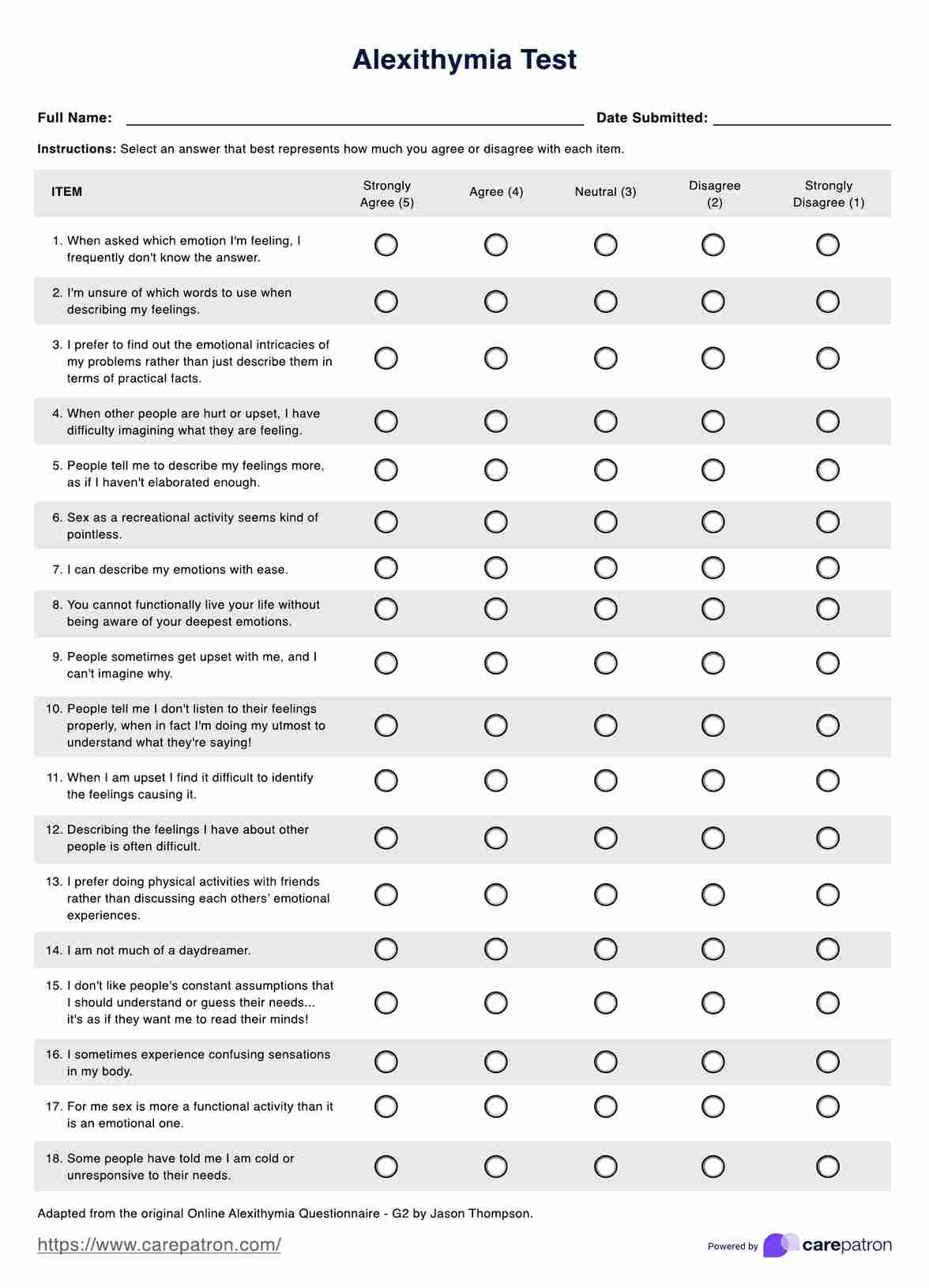It can take you anywhere between 7 to 15 minutes.

Alexithymia Test
Have your patient answer the alexithymia test to gauge how difficult it is for them to describe and express their emotions.
Alexithymia Test Template
Commonly asked questions
Psychologists, psychiatrists, psychometricians, mental health therapists, counselors, and other mental healthcare professionals. This test is also a self-assessment, so even non-professionals can use it to gauge themselves. If you’re a non-professional and you stumbled upon this guide, feel free to use the template to gauge yourself! Just don’t substitute this for therapy/counseling, and don’t self-diagnose yourself. It’s best to see a professional for that.
The instructions are simple, so it shouldn’t be difficult to answer. Whatever difficulty that arises will come from the person answering it. There might be a chance that they will have to sit down and think long and hard about how much the items apply to them. The great thing about this test is that it accounts for people who actually have alexithymia, and it does so by phrasing the items in such a way that they can understand them.
EHR and practice management software
Get started for free
*No credit card required
Free
$0/usd
Unlimited clients
Telehealth
1GB of storage
Client portal text
Automated billing and online payments











